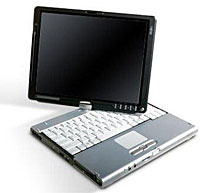 Fujitsu LifeBook T4020
Fujitsu LifeBook T4020
Claimed to combine the “convenience and familiarity of a notebook with the powerful and versatile functionality of a slate Tablet PC”, Toshiba’s new LifeBook T4020 comes with Intel Pentium M 740 or 760 processors beating inside its swish silver and black casing, with a swivel-tastic 12.1″ XGA display offering a 160 degree viewing angle.
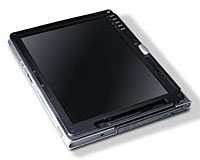 The Windows XP Tablet PC Edition 2005-powered convertible Tablet PC comes fitted with a 56K V.90 modem, Ethernet and Atheros Super AG or Intel PRO/Wireless 2915ABG Wi-Fi connectivity, with the option to add Bluetooth.
The Windows XP Tablet PC Edition 2005-powered convertible Tablet PC comes fitted with a 56K V.90 modem, Ethernet and Atheros Super AG or Intel PRO/Wireless 2915ABG Wi-Fi connectivity, with the option to add Bluetooth.
Paranoid types can also purchase an optional fingerprint sensor to keep prying eyes away.
The laptop comes with a rather miserly 256 meg of RAM as standard (upgradeable to 2GB), 40GB Shock-Mounted Hard Drive and one Type I or Type II PCMCIA card slot fitted into its 11.5″ x 9.3″ x 1.4″ dimensions.
Fujitsu Stylistic ST5032 tablet
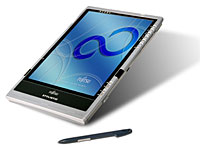 Running on Microsoft Windows XP Tablet PC Edition 2005, the Stylistic ST5032 tablet PC comes in two sizes, with customers able to choose between the 12.1″ XGA and 10.4″ indoor/outdoor displays.
Running on Microsoft Windows XP Tablet PC Edition 2005, the Stylistic ST5032 tablet PC comes in two sizes, with customers able to choose between the 12.1″ XGA and 10.4″ indoor/outdoor displays.
The super slimline silver beastie (12.77″ x 8.66″ x .88″) weighs in at 3.5 pounds, boasting an Intel Pentium M 753 processor, a shock-mounted hard drive and built-in TPM, a dedicated Smart Card slot and a biometric swipe sensor (on 12.1″ display models only).
There’s also a nifty dual mic array with noise cancellation software, 60 GB hard drive, built in 56K V.90 modem, 10/100/1000 Ethernet LAN, Bluetooth, Intel PRO/Wireless 2915ABG Network Connection (Tri-mode 802.11a/b/g) and 512 meg RAM.
The PR blurb
“As enterprises increasingly rely on vast numbers of mobile workers, they require a mobile computing platform that is easy to deploy, maintain, and service,” frothed Paul Moore, director of mobile product marketing at Fujitsu Computer Systems.
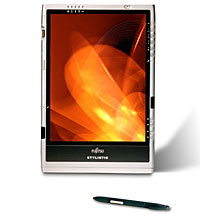 Cranking up his PR offensive to eleven, Moore continued, “Fujitsu offers a broad array of mobile solutions with the features, security, flexibility, reliability and ease of integration these companies need – all at competitive prices”.
Cranking up his PR offensive to eleven, Moore continued, “Fujitsu offers a broad array of mobile solutions with the features, security, flexibility, reliability and ease of integration these companies need – all at competitive prices”.
Prices for the Fujitsu LifeBook T4020 start at US$1,599 (£888, €1,300) and US$2,499 (£1,390, €2,030) for the T5032. Availability is to be announced.
 After an encouraging response from listeners, Virgin Radio has announced that it will be making its Sunday afternoon programme ‘The Tim Lovejoy Show’ available as a podcast.
After an encouraging response from listeners, Virgin Radio has announced that it will be making its Sunday afternoon programme ‘The Tim Lovejoy Show’ available as a podcast.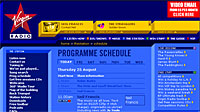 Lovejoy’s sports and entertainment show is broadcast weekly from 4pm to 7pm, and Virgin have said that they’ll make the “best bits” available for consumers to download to their MP3 players from 28th August.
Lovejoy’s sports and entertainment show is broadcast weekly from 4pm to 7pm, and Virgin have said that they’ll make the “best bits” available for consumers to download to their MP3 players from 28th August. Following
Following 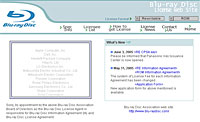 We think that Blu-Ray’s dogged pursuit for high capacity (possibly in the face of Unified DVD), and the fact that Sony are driving Blu-Ray is no coincidence.
We think that Blu-Ray’s dogged pursuit for high capacity (possibly in the face of Unified DVD), and the fact that Sony are driving Blu-Ray is no coincidence.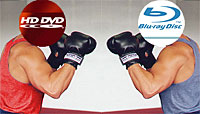 Cover layer thickness difference
Cover layer thickness difference
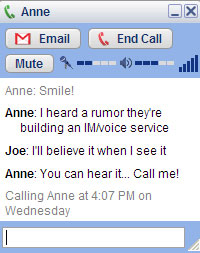 The program, Google Talk, is based on the open source Jabber protocol and competes directly with the three major providers of instant messaging – AOL, Microsoft and Yahoo.
The program, Google Talk, is based on the open source Jabber protocol and competes directly with the three major providers of instant messaging – AOL, Microsoft and Yahoo.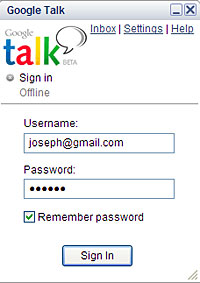 The software will let users have multiple voice sessions open at the same time, but only one can be active at any given time.
The software will let users have multiple voice sessions open at the same time, but only one can be active at any given time.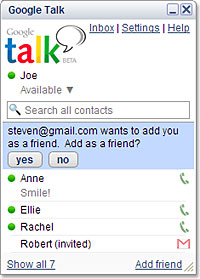 Currently, the three major messaging services are closed shops that generally don’t permit users to send messages to and from competing services – a source of continuing frustration for many IM users.
Currently, the three major messaging services are closed shops that generally don’t permit users to send messages to and from competing services – a source of continuing frustration for many IM users.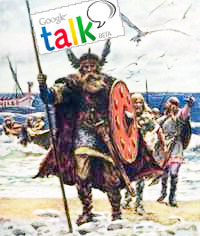 Peter Saint-Andre, executive director of the Jabber Software Foundation, estimated that 13.5 million use the Jabber standard, based on figures from Osterman Research.
Peter Saint-Andre, executive director of the Jabber Software Foundation, estimated that 13.5 million use the Jabber standard, based on figures from Osterman Research.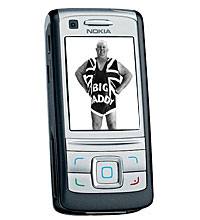 Nokia has risen to become King Of The Hill of 3G phones with a market share of 17%, with its attractive range of 3G phones trouncing products from rivals NEC and LG.
Nokia has risen to become King Of The Hill of 3G phones with a market share of 17%, with its attractive range of 3G phones trouncing products from rivals NEC and LG.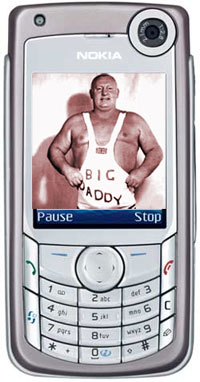 Previous 3G front-runners Motorola and LG have been overtaken by Nokia, with the report warning the manufacturers that they “have significant work to do to match up in the next battle for WCDMA phones priced below US$200 (~£111, €164~) wholesale, which will present significant mass-market opportunities in 2006 to 2010”.
Previous 3G front-runners Motorola and LG have been overtaken by Nokia, with the report warning the manufacturers that they “have significant work to do to match up in the next battle for WCDMA phones priced below US$200 (~£111, €164~) wholesale, which will present significant mass-market opportunities in 2006 to 2010”. Canon has announced its new PowerShot S80 consumer camera, an eight megapixel compact camera with a wide range of auto and manual controls.
Canon has announced its new PowerShot S80 consumer camera, an eight megapixel compact camera with a wide range of auto and manual controls.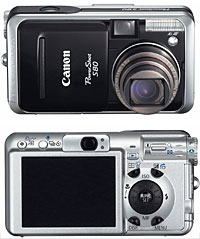 The camera packs in some advanced features including real-time histogram display, FlexiZone AF/AE with a freely movable focus point and manual focus override with 21 shooting modes taking care of most lighting conditions.
The camera packs in some advanced features including real-time histogram display, FlexiZone AF/AE with a freely movable focus point and manual focus override with 21 shooting modes taking care of most lighting conditions.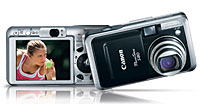 Surprisingly, RAW capture has been left off the spec list, although there’s USB 2.0 compatibility to help speedily transfer images to a PC speedily.
Surprisingly, RAW capture has been left off the spec list, although there’s USB 2.0 compatibility to help speedily transfer images to a PC speedily.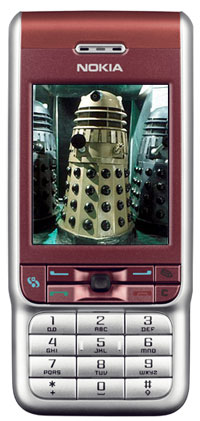 The BBC has announced that it will be offering classic episodes of “Doctor Who” and “Red Dwarf” on digital video chips for viewing on mobile phones.
The BBC has announced that it will be offering classic episodes of “Doctor Who” and “Red Dwarf” on digital video chips for viewing on mobile phones.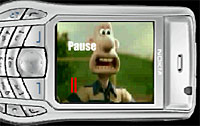 Films can be fast forwarded, rewound and paused, just like a conventional movie player.
Films can be fast forwarded, rewound and paused, just like a conventional movie player.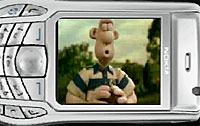 The first scheduled release is The Five Doctors, a 90-minute Dr Who special originally shown in 1983, followed by three episodes of cult sci-fi hit, Red Dwarf.
The first scheduled release is The Five Doctors, a 90-minute Dr Who special originally shown in 1983, followed by three episodes of cult sci-fi hit, Red Dwarf. Warner Music Group has announced a new digital music distribution mechanism based on downloads rather than physical media like CDs.
Warner Music Group has announced a new digital music distribution mechanism based on downloads rather than physical media like CDs.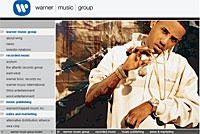 With far lower production costs, Bronfman claimed that the e-label will give recording artists a “supportive, lower-risk environment” (I think this means “less cash from the record company”) without as much pressure for huge commercial hits – something that could benefit artists with a more “selective audience”.
With far lower production costs, Bronfman claimed that the e-label will give recording artists a “supportive, lower-risk environment” (I think this means “less cash from the record company”) without as much pressure for huge commercial hits – something that could benefit artists with a more “selective audience”.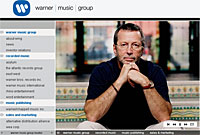 Bronfman called on the technology industry to work on digital rights management (DRM) standards, arguing that compulsory licensing – with support from P-to-P vendors – would set a price for downloaded music while forcing music companies to make their products available online to P-to-P users.
Bronfman called on the technology industry to work on digital rights management (DRM) standards, arguing that compulsory licensing – with support from P-to-P vendors – would set a price for downloaded music while forcing music companies to make their products available online to P-to-P users.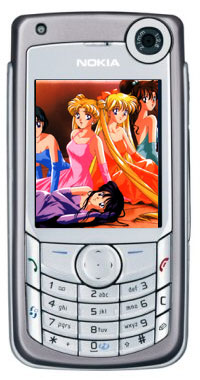 Sony Pictures Entertainment is set to triple the number of comic books it offers as mobile downloads in Japan, making the company the number one provider of “manga” downloads.
Sony Pictures Entertainment is set to triple the number of comic books it offers as mobile downloads in Japan, making the company the number one provider of “manga” downloads.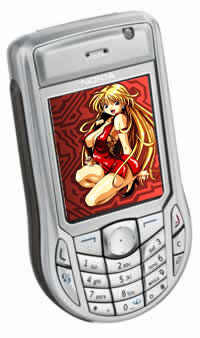 Sony intends to offer more comic books than competitors like NTT Solmare, (unit of telecom firm NTT) and Toppan Printing.
Sony intends to offer more comic books than competitors like NTT Solmare, (unit of telecom firm NTT) and Toppan Printing.